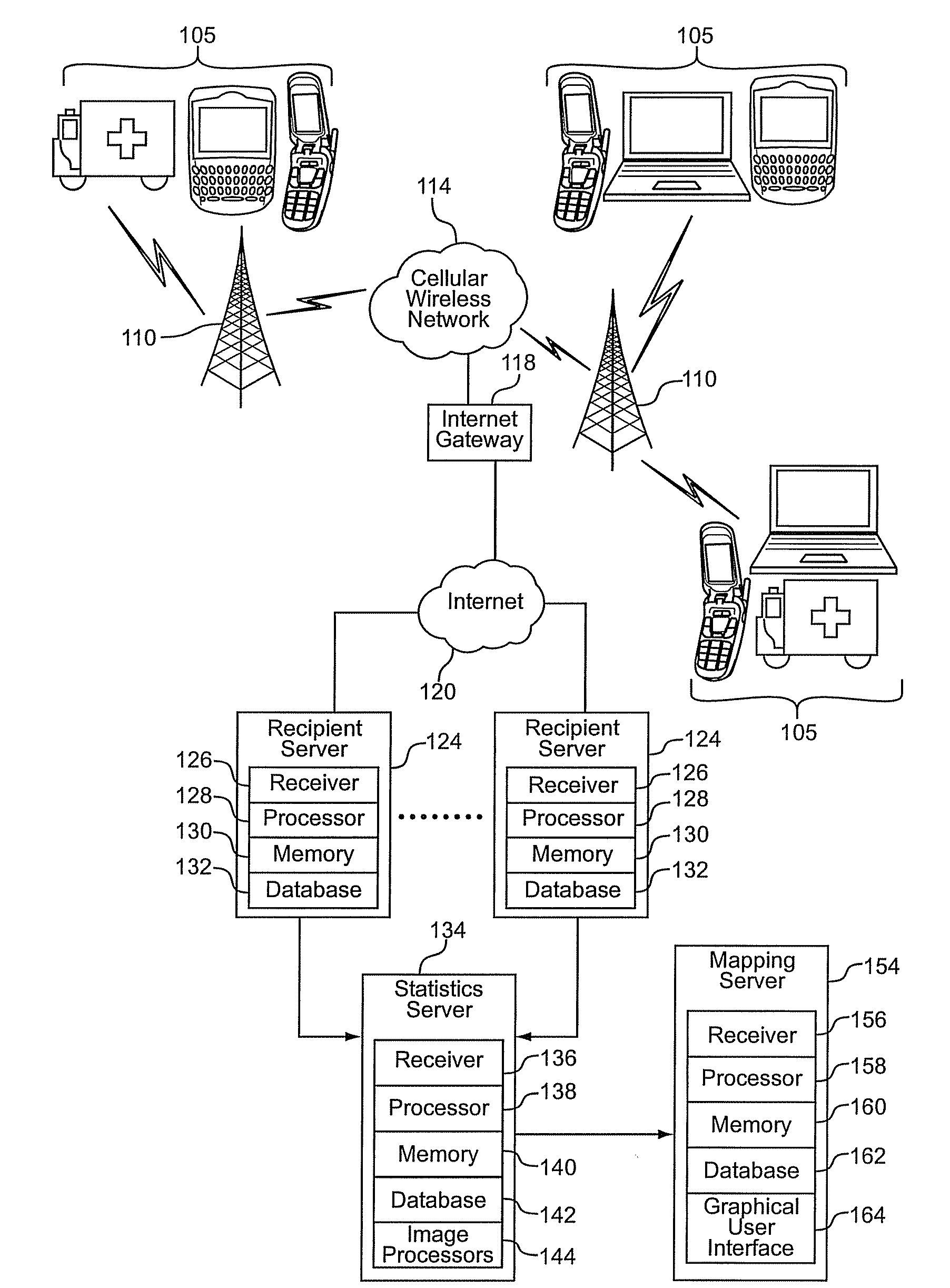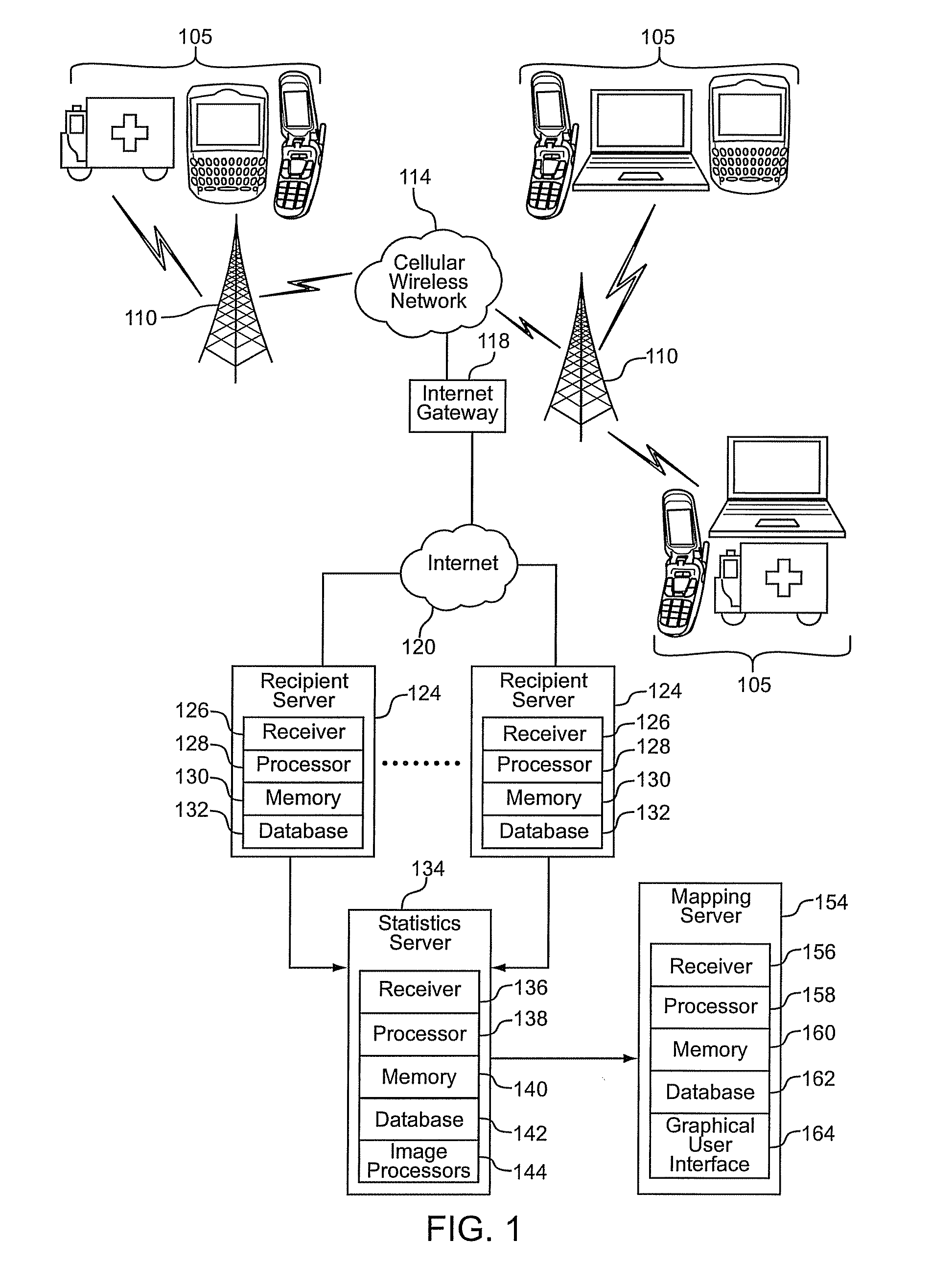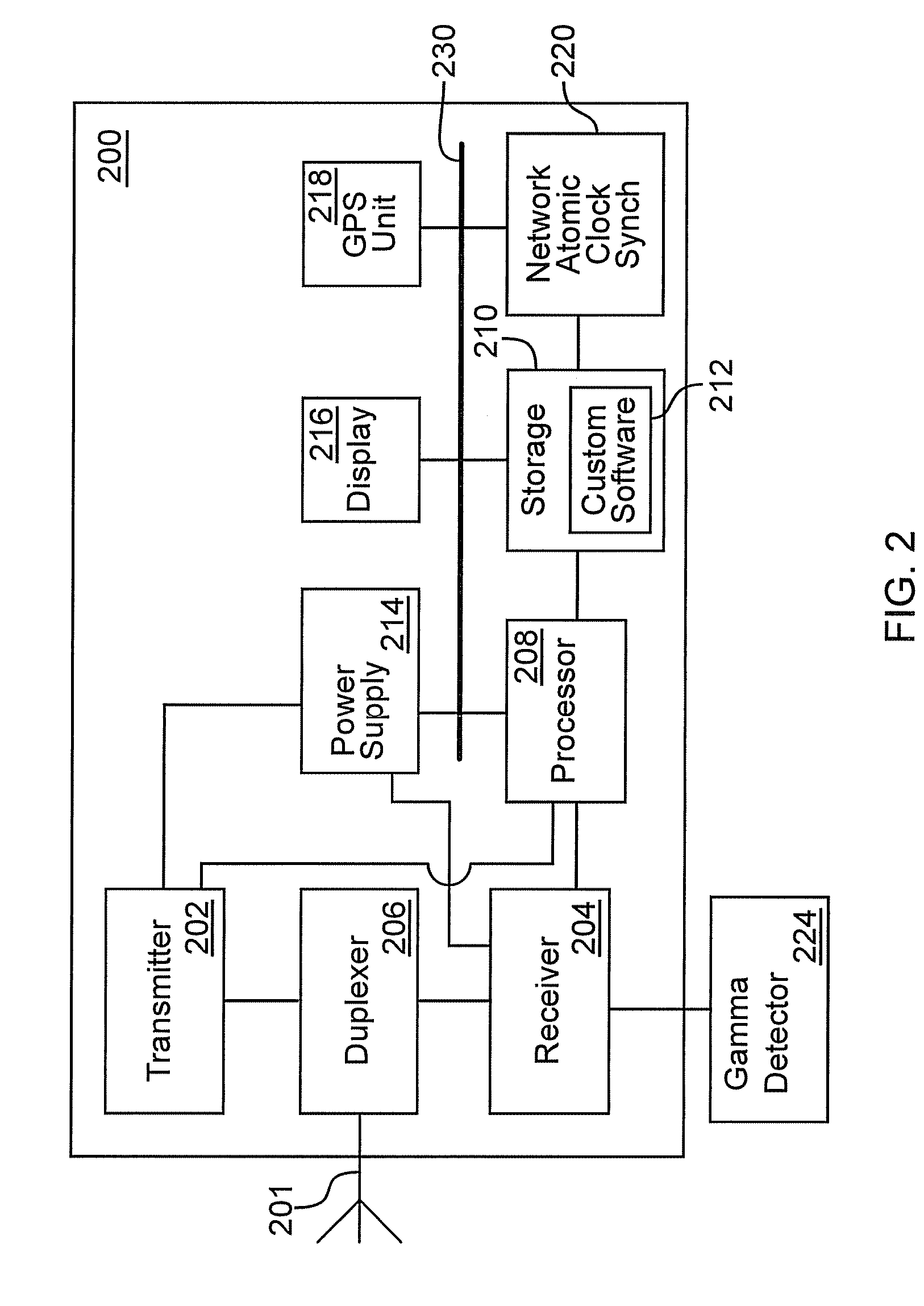Nuclear detection via a system of widely distributed low cost detectors
a detector and widely distributed technology, applied in the direction of optical radiation measurement, fire alarms, instruments, etc., can solve the problems of background problems, traditional approaches such as using, detecting bombs, and serious limitations
- Summary
- Abstract
- Description
- Claims
- Application Information
AI Technical Summary
Problems solved by technology
Method used
Image
Examples
Embodiment Construction
[0017]In the following description, numerous specific details of programming, software modules, user selections, network transactions, database queries, database structures, etc., are provided for a thorough understanding of various embodiments of the systems and methods disclosed herein. However, the systems and methods disclosed can be practiced without one or more of the specific details, or with other methods, components, materials, etc.
[0018]In some cases, well-known structures, materials, or operations are not shown or described in detail. Furthermore, the described features, structures, or characteristics may be combined in any suitable manner in one or more embodiments. The components of the embodiments as generally described and illustrated in the Figures herein could be arranged and designed in a wide variety of different configurations.
[0019]Several aspects of the embodiments described are illustrated as software modules or components. As used herein, a software module or...
PUM
 Login to View More
Login to View More Abstract
Description
Claims
Application Information
 Login to View More
Login to View More - R&D
- Intellectual Property
- Life Sciences
- Materials
- Tech Scout
- Unparalleled Data Quality
- Higher Quality Content
- 60% Fewer Hallucinations
Browse by: Latest US Patents, China's latest patents, Technical Efficacy Thesaurus, Application Domain, Technology Topic, Popular Technical Reports.
© 2025 PatSnap. All rights reserved.Legal|Privacy policy|Modern Slavery Act Transparency Statement|Sitemap|About US| Contact US: help@patsnap.com



